#SMTP Relay Service provider
Explore tagged Tumblr posts
Text
Send bulk of emails
What is the best email sending tool?
Are you want to send the bulk of emails?
There are so many email marketing platforms available in the online market that help you can send emails. But Mailchimp, mailer lite, Sendinblue, moosend, constant contact like all marketing tools have subscriber limits.
As per my research, almost every email marketing platform has a limit of 1000 - 10000 subscribers limit. If you want to extend the limit from 10000 to more then probably you spend lots of bucks for it.
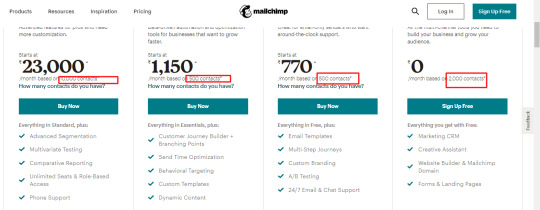
In my detailed analysis, I found one email marketing platform that helps you can send the bulk of emails without any limit of subscribers.


today I am introducing the best email marketing platform that helps you can send the bulk of emails without any limit of subscribers.
Mail250:
Mail250 is an innovative email marketing tool. It comes with an I-MTA ( At-based Mail Transfer Agent). It minimizes your bounce backs and probably your emails will not be delivered to the spam folder. Use does not know about ISP ( internet service provider rules) that wise they face maximum bounce backs. The crucial part is ISP rules changes day by day. So, This I-MTA feature updates you whenever ISP rules change.
By using mail250 you can use all features in basic plans like CRM, marketing automation, A/B testing, segmentation. No need to buy a premium plan for extra features.
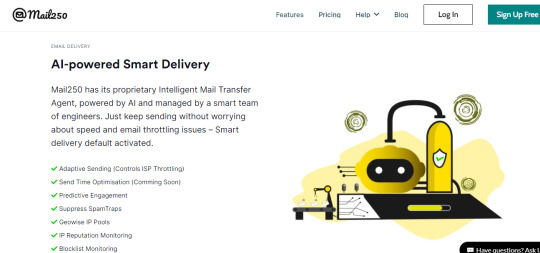
Basic plan: It starts from 20$ by using some coupons you can get it in 10$ too. You can send up to 740,000 emails/month.
Premium plan: You can send up to 11,160,000 emails/month.
For minimizing bounce backs mail250 had set up a limit of 1000 - 15000 emails/hr. You can not send more than 15000 emails at once.
SMTP and SMTP relay support makes it more secure, and you can send transactional emails too.
In above screenshot I have highlighted pricing and contact limit of email marketing tools.

I hope the above insights will help you to send the bulk of emails, If you have any further suggestions then please feel free to comment in the comment section.
Thank you
#email#email marketing#content creation#bulkorder#business#b2b email list#email list#mailchimp#mail250#fauci emails#tw ed mention#analysis#live blogging#blog#google trends#email marketing tools
3 notes
·
View notes
Text
Best SMTP Service Providers
SMTPget is one of the best SMTP service provider companies in the USA. They have been providing services related to email marketing for years now. They provide services such as SMTP Server Service, Bulk mailing service, and Email campaign services. Email marketing experts at SMTPget help you achieve the highest possible ROI out of your email marketing efforts.
At SMTPget, they ensure that their clients get the best SMTP Service and they never have to look for some other SMTP Server provider after that. With our SMTP server service, you get a dedicated IP that gives you complete freedom over your sender reputation, better the sender reputation better the results you’ll get out of your email marketing campaigns.
SMTP server services let you send emails in bulk and at a fast speed. SMTPget, an SMTP server provider in the US provides SMTP services at reasonable prices. They aim to let even small businesses leverage the power of email marketing. To know more about SMTP Server Services you may get in touch with SMTPget.

SMTPget is the best and affordable SMTP Service provider in the US. Taking SMTP server service from them has numerous benefits such as dedicated IP, SPF & DKIM configuration, IP rotation, high inbox delivery rate, 24x7 Multilingual support and more. To know more about SMTP Server Services you may get in touch with SMTPget.
Various organizations from all industry verticals trust Buy SMTPserver to communicate swiftly with their users advantageously and efficiently. SMTPget has been working with companies across the globe and has good experience in managing email campaigns for e-commerce and B2B companies. If you are looking for an SMTP Service provider then you should definitely consider SMTPget.
SMTP server is essential for sending and receiving emails. If you are looking for an SMTP server provider then you should check out SMTPget. SMTPget is one of the best email marketing companies in US. SMTPget provides services such as SMTP Service, Bulk Email service and email database service.
While using the SMTP server service you need to have a domain via which emails will be sent. You may also use a subdomain of your website for this purpose. Using the brand domain helps in making your emails credible and decreases the chances of making your emails land in spam.
SMTPget provides the best email marketing services such as SMTP Server service and Bulk mailing services. They are providing SMTP Server Service for years now. They canbypass certain limits placed on individual senders, such as rate limits per hour or even volume limits, which can impact the success of your campaign.
SMTP service provider will give you features to help prevent, diagnose, and fix email delivery failures by allowing you to monitor what is going on with your email program. Email statistics such as delivery rates, clicks, and spam complaints can help you optimize your email campaigns for maximum ROI out of your email marketing efforts.
Email SMTP service provider is an email delivery vendor that uses Simple Mail Transfer Protocol to send and receive emails. Email messages travel SMTP to relay your messages from your server to the recipient’s server so that it can be delivered and read by the end recipient.
1 note
·
View note
Text
Free Email SMTP Service

SMTPget is one of the best SMTP service provider companies in the USA. They have been providing services related to email marketing for years now. They provide services such as SMTP Server Service, Bulk mailing service, and Email campaign services. Email marketing experts at SMTPget help you achieve the highest possible ROI out of your email marketing efforts.
At SMTPget, they ensure that their clients get the best SMTP Service and they never have to look for some other SMTP Server provider after that. With our SMTP server service, you get a dedicated IP that gives you complete freedom over your sender reputation, better the sender reputation better the results you’ll get out of your email marketing campaigns.
SMTP server services let you send emails in bulk and at a fast speed. SMTPget, an SMTP server provider in the US provides SMTP services at reasonable prices. They aim to let even small businesses leverage the power of email marketing. To know more about SMTP Server Services you may get in touch with SMTPget.
SMTPget is the best and affordable SMTP Service provider in the US. Taking SMTP server service from them has numerous benefits such as dedicated IP, SPF & DKIM configuration, IP rotation, high inbox delivery rate, 24x7 Multilingual support and more. To know more about SMTP Server Services you may get in touch with SMTPget.
Various organizations from all industry verticals trust Buy SMTPserver to communicate swiftly with their users advantageously and efficiently. SMTPget has been working with companies across the globe and has good experience in managing email campaigns for e-commerce and B2B companies. If you are looking for an SMTP Service provider then you should definitely consider SMTPget.
SMTP server is essential for sending and receiving emails. If you are looking for an SMTP server provider then you should check out SMTPget. SMTPget is one of the best email marketing companies in US. SMTPget provides services such as SMTP Service, Bulk Email service and email database service.
While using the SMTP server service you need to have a domain via which emails will be sent. You may also use a subdomain of your website for this purpose. Using the brand domain helps in making your emails credible and decreases the chances of making your emails land in spam.
SMTPget provides the best email marketing services such as SMTP Server service and Bulk mailing services. They are providing SMTP Server Service for years now. They canbypass certain limits placed on individual senders, such as rate limits per hour or even volume limits, which can impact the success of your campaign.
SMTP service provider will give you features to help prevent, diagnose, and fix email delivery failures by allowing you to monitor what is going on with your email program. Email statistics such as delivery rates, clicks, and spam complaints can help you optimize your email campaigns for maximum ROI out of your email marketing efforts.
Email SMTP service provider is an email delivery vendor that uses Simple Mail Transfer Protocol to send and receive emails. Email messages travel SMTP to relay your messages from your server to the recipient’s server so that it can be delivered and read by the end recipient.
1 note
·
View note
Text
Benefits of an SMTP server
An SMTP server is a computer or an app that is responsible for sending emails. It functions following the Simple Mail Transfer Protocol (SMTP). An SMTP server receives emails from the email client.
SMTP is an acronym that stands for "simple mail transfer protocol". In the simplest possible terms, an SMTP server is a server or collection of servers whose sole purpose is to send and receive messages in the form of emails. From a technical standpoint, an SMTP server is built just like any other server - it's the function of an SMTP server that sets it apart. SMTP servers will also have their own dedicated address or set of addresses that will be determined by the client using the server.
Not this is the only reason,there are numerous advantages of SMTP Server which comes as a free component along with windows.simple it is server which was was developed by Microsoft for the purpose of sending mails,managing mail queue's e.t.c.fine if you have an organisation where your outgoing mail has value,then you will prefer SMTP otherwise you can use whatever you want,because I don't want to be Religious about Technologies..anyway fact is the i like the way Microsoft put things...click here to know more - answers.com.
The following are the benefits of SMTP Server
Guaranteed Delivery of Marketing Emails
An SMTP relay service allows sending emails via third party SMTP server, to recipients whose email addresses are not managed by your provider. This is very much useful for businesses running promotional campaigns, as it makes them reach the masses.
Allows Using SMTP Server for Sending Emails to Thousands of Recipients
Majority of shared hosting and Internet Service Providers (ISPs) bound access to their outgoing mail servers just to avoid SPAM from being sent via their mail servers, and that is why businesses often find difficulty in running any promotional activities. With mass email marketing, the new SMTP relay service facilitates clients to send unlimited emails, and makes sure they're read.
Allows Application Coders and Programmers to Send Emails for Their Apps
Application programmes, mobile developers and web developers can take advantage of an SMTP relay service to deliver emails for their apps through thrid party SMTP servers. Nowadays, most of the modern applications require email capabilities of some kind, and this new offering supports such scenarios.
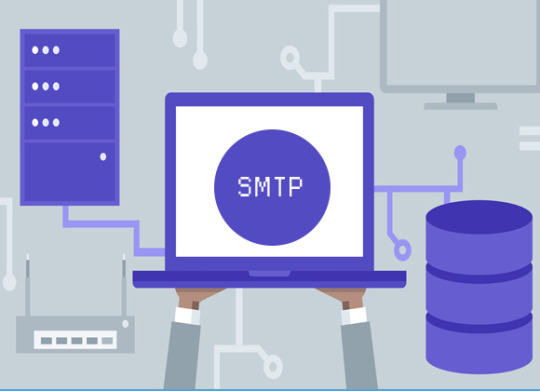
Quick Email Delivery
Since SMTP is developed from a simple platform, email messages may be sent easily and quickly. 'Â As long as one's SMTP mail server is working and in good condition, one can expect that messages are sent quickly to various recipients.
Reliability
SMTP also offers reliability in terms of outgoing email messages. 'Â If there are instances where a particular message was not successfully sent, the SMTP server will always try to re-send the same email until the transmission becomes successful. 'Â This is unlike other means of sending email wherein one may have to try several times in sending out an email...get more to know at - benefitof.net.
Keep in mind that SMTP servers deal with outgoing mail only. For this you outbound smtp service so that you can deliver your mails with ease.
1 note
·
View note
Text
Best SMTP Service Providers
Emails are one of the most popular tools for businesses and its popularity shows no signs of slowing down. There are lots of SMTP providers out there who send emails directly from your website to your users. So, how will you know which one is the best provider for you?
In this article, we will give you the best SMTP providers who provide great email deliverability and great customer support.

OutboundSMTP
Deliver Your Message To The Inbox with OutboundSMTP.
With a correctly configured SPF, DKIM and DMARC record you’ll be able to deliver your mail reliably to the inbox. We optimize our sending routes and closely monitor our IP reputations to ensure you the best possible service. We have a Zero Spam Policy that allows us to block or restrict messages that would damage our reliability or the reputation of our customers.
A reliable authenticated SMTP gateway for sending emails from desktop email clients, mobile devices, web sites, voicemail systems, fax machines, copiers, applications or email servers. Messages can be accepted on non-standard SMTP ports (25, 26, 587, 2500, 2525).

Mailjet
As one of the world's leading email service providers, Mailjet's robust delivery infrastructure routes billions of emails to the inbox every month. Easily set up our free SMTP Server in minutes and discover how our platform will help you send your emails faster.
Mailjet's Free SMTP Server integrates easily with any system. You can update your configuration using our SMTP server, one of the supported ports, and simply authenticate with your credentials (API key, secret key)

Send Grid
Simple mail transfer protocol (SMTP) delivers outgoing email and does not accept incoming email. You may have heard the term SMTP relay service, especially if you’re looking for an email provider for a newsletter or transactional email delivery. But why is delivering outgoing email only so important and how does it work?
SendGrid’s SMTP services are scalable and allow you to add additional capacity as your needs grow. SendGrid provides a variety of SMTP hosting and relay services for transactional email and enterprise jobs.

MailChannels
MailChannels builds email security products for hosting providers to give users a more secure, more reliable email experience. We help businesses grow by providing tools that protect their servers from sending spam, identify bad actors, and deliver a superior email service.
MailChannels combines an email delivery service with spam filtering that lets you outsource email deliverability to the experts. At the heart of our email platform is the latest in our cloud-based infrastructure provides reliability, scalability, and security.

SocketLabs
Some of the largest SMTP implementations on the market are open source SMTP, meaning that they are freely available.
Examples include Sendmail SMTP and Postfix SMTP. Both provide a completely free solution to setting up an outgoing mail server.
However, keep in mind that the open source options are usually very complex and hard to configure. You’ll need to pay a team of experts to setup your server, in which case it no longer is truly free.
SocketLabs grew out of the need to solve email technology problems. When the company was founded, email was an immature technology, used very simply to send communication between individuals. The company’s founders, specialists in software development – were pioneers in the process of evolving email into a strategic business tool.
Conclusion
We hope this article helped you find the best SMTP service provider to send your emails. We will recommend you to get the services of OutboundSMTP. They are the best in the business and offer great email deliverability.
1 note
·
View note
Text
What does an SMTP server mean?
SMTP servers are complicated, and if you’re just dipping your toe into the how-email-gets-sent world, it’s easy to feel overwhelmed. To help you navigate your email sending, we’ve put together a list of things that will help you understand how an SMTP server works.
What does an SMTP server mean?
Short for Simple Mail Transfer Protocol, a protocol for sending e-mail messages between servers. Most e-mail systems that send mail over the Internet use SMTP to send messages from one server to another; the messages can then be retrieved with an e-mail client using either POP or IMAP. In addition, SMTP is generally used to send messages from a mail client to a mail server. This is why you need to specify both the POP or IMAP server and the SMTP server when you configure your e-mail application...to read more visit - Webopedia.com/.
The Simple Mail Transfer Protocol (SMTP) is a communication protocol for electronic mail transmission. As an Internet standard, SMTP was first defined in 1982 by RFC 821, and updated in 2008 by RFC 5321 to Extended SMTP additions, which is the protocol variety in widespread use today. Mail servers and other message transfer agents use SMTP to send and receive mail messages. Proprietary systems such as Microsoft Exchange and IBM Notes and webmail systems such as Outlook.com, Gmail and Yahoo! Mail may use non-standard protocols internally, but all use SMTP when sending to or receiving email from outside their own systems. SMTP servers commonly use the Transmission Control Protocol on port number 25.
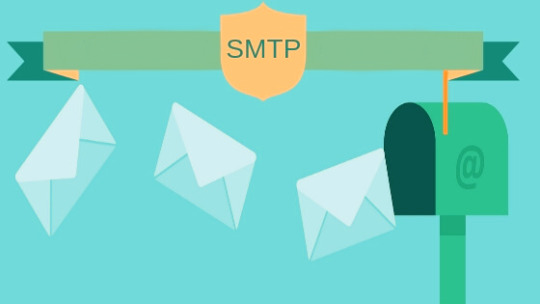
User-level email clients typically use SMTP only for sending messages to a mail server for relaying, and typically submit outgoing email to the mail server on port 587 or 465 as per RFC 8314. For retrieving messages, IMAP and POP3 are standard, but proprietary servers also often implement proprietary protocols, e.g., Exchange ActiveSync.
History
Various forms of one-to-one electronic messaging were used in the 1960s. Users communicated using systems developed for specific mainframe computers. As more computers were interconnected, especially in the U.S. Government's ARPANET, standards were developed to permit exchange of messages between different operating systems. SMTP grew out of these standards developed during the 1970s...read more at - Wikipedia.org/.
SMTP Protocol
The SMTP model is of two type :
End-to-end method
Store-and- forward method
The end to end model is used to communicate between different organizations whereas the store and forward method are used within an organization. A SMTP client who wants to send the mail will contact the destination’s host SMTP directly in order to send the mail to the destination. The SMTP server will keep the mail to itself until it is successfully copied to the receiver’s SMTP.
The client SMTP is the one which initiates the session let us call it as the client- SMTP and the server SMTP is the one which responds to the session request and let us call it as receiver-SMTP. The client- SMTP will start the session and the receiver-SMTP will respond to the request...visit - Geeksforgeeks.org/ to know more.
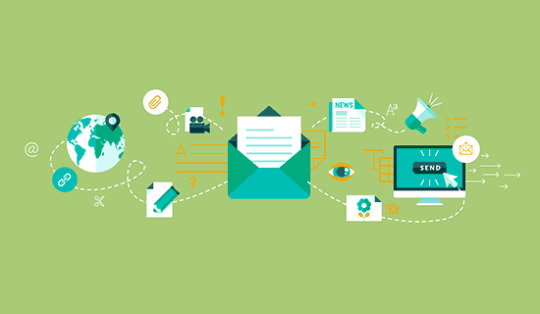
Benefits of SMTP
SMTP is “simple” and has the following benefits or advantages:
Simplicity
SMTP provides the simplest form of communicating through email messages between various computers in a particular network. ‘Â There are no hassles for the end-users as they only need to type their email and send it to the recipient’s email address. ‘Â The email will just go through a simple process from the SMTP server to an exchange server for the recipient’s computer making the electronic communication simple and not complicated.
Quick Email Delivery
Since SMTP is developed from a simple platform, email messages may be sent easily and quickly. ‘Â As long as one’s SMTP mail server is working and in good condition, one can expect that messages are sent quickly to various recipients.
Reliability
SMTP also offers reliability in terms of outgoing email messages. ‘Â If there are instances where a particular message was not successfully sent, the SMTP server will always try to re-send the same email until the transmission becomes successful. ‘Â This is unlike other means of sending email wherein one may have to try several times in sending out an email.
Option for Dedicated Servers
With SMTP, companies and organization s may opt to have a dedicated server to handle outgoing email messages. ‘Â Although web mail services and ISPs may offer the same services, not many of them can actually provide exclusivity when it comes to mail servers. ‘Â This could mean problems with email transmission. ‘Â But with SMTP, servers are maintained locally and may be configured to exclusively handle very important and sensitive email messages...go to - Benefitof.net/ to read more.
Without an SMTP server, your email won't reach your destination. An SMTP service can help you do this with ease. If you need more information on SMTP then you should visit this site and know more about SMTP.
1 note
·
View note
Text
What is An SMTP Server Relay
A simple mail transfer protocol relay (SMTP relay) is a service that is used as a means to transport email messages in between different email hosting services, servers and/or domains.
Explaining SMTP relay
An SMTP relay is primarily used when an email needs to be delivered to a domain different from the user’s domain. For example, if an email is being sent from [email protected] to [email protected], SMTP relay is required to transmit messages between each domain. SMTP relay is generally a third-party application or service that mediates the process of sending, delivering and fetching email messages between different email hosts.
SMTP relays are also used in email composing applications such as Outlook. Users can configure their email address on the software and are able to send emails from multiple email addresses (of the same or a different domain) without the need to consider domain, ISP or organization...get more to know at -Techopedia.

To secure this set up, for incoming mail, allow the IIS SMTP server to relay only to your own domains. For outgoing mail, allow the IIS SMTP server to relay to all domains. If you allow incoming mail to be relayed to all domains, spammers will take advantage of your open mail relay and you'll process thousands of spam e-mails within a few days. A default configuration allows all computers that can authenticate to relay through the server; however, authentication requires more overhead, so it's better to allow relay based on IP address.
Since you only want to allow your Exchange Server to use the IIS SMTP Server as an open relay, add the IP address of your Exchange Server to Allow "Only the list below." You need to allow the IIS SMTP Service to act as an open relay for your Exchange Server because the Exchange Server needs to send SMTP mail to all Internet mail domains. The open relay for outbound mail is required. You also need to prevent relay for incoming messages. Do this by configuring the server to relay only messages destined to your own domain:
In the Internet Services Manager console, expand the Default SMTP Virtual Server node.
Right-click on the Domains node, point to New and click Domain.
Select the Remote option and click Next.
Type in your mail domain name and click Finish.
Double-click on your new Remote Domain name.
Check the option to Allow incoming mail to be relayed to this domain so that inbound mail destined for other domains is dropped by the SMTP relay. Read more at - Techtarget.com.

What is SMTP Authentication?
SMTP authentication is the process in which ISP clients identify themselves to the mail server from which they are going to send an email.
SMTP server is used for sending emails. Google provides the free SMTP server through Gmail service. Anyone can send emails using Gmail and it is for free. This service can be used for sending personal emails or can be used even with your website. You can use this service for sending newsletters, contact forms, and notifications.
SMTP test tools: SMTP test tools or SMTP diagnostics tools are useful to identify and troubleshoot SMTP server problems. For this, it sends a message to the SMTP server. All these trials are displayed or recorded in a log...to know more, visit - Softwaretestinghelp
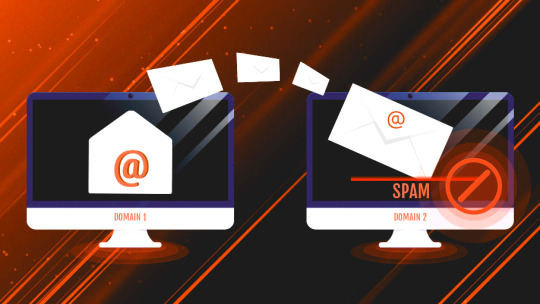
Difference between SMTP server and SMTP Relay
SMTP Server is somewhat generic and can mean any server utilizing the SMTP protocol. However, in this context, it means the server to which a mail client (for example Thunderbird) connects to to send the mail. In additionally to being the first point through which the mail passes, it is also usually the last, as SMTP servers are responsible for delivering the mail to a mailbox (POP3 or IMAP, usually).
SMTP Relay is a more specific term. Think of it like a post office sorting facility - It deals with mail coming from other servers, such as the SMTP server above. It then passes it on in the right direction to other SMTP servers.
To simply be able to send the mail, you do not need a relay server. Additionally, it is recommended to not allow relaying unless you really need to, as an SMTP relay can be abused by spammers...find out more at - Superuser.com.
Email marketing can be complicated and making sure your messages clear your outgoing server and land in your customers’ Gmail, AOL, or Yahoo inboxes should not be a concern. Using an SMTP relay will save you time and money. Click here to know more about an SMTP relay.
1 note
·
View note
Text
What is an Email Server
A mail server (or email server) is a computer system that sends and receives an email. In many cases, web servers and mail servers are combined in a single machine.
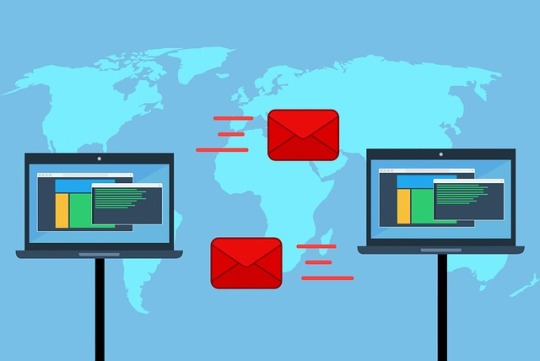
Explanation of an Email Server
An email server is a computer with mail transfer agent (MTA) functions. Mail is exchanged between email servers running special software, which is built around standardized protocols for handling messages and their varied (multimedia) content.
An email server receives mail from another MTA, a mail user agent (MUA) or a mail submission agent (MSA) with the details of the transmission being defined by SMTP. When an MTA receives a mail and the recipient of the mail is not hosted locally, the mail is forwarded to another MTA. Every time this happens the MTA adds a "received" trace header on the top header of the message. This shows all the MTAs that have handled the message before it arrived in the recipient’s inbox. This useful feature allows administrators to see whether an optimal path was taken...read more over at - techopedia.

What is my mail server address?
Your mail server address and other information should be provided by your e-mail provider. This information is ususally found on either the e-mail providers support page or in documentations from your e-mail provider. On your e-mail provider's website, the information may be listed as SMTP and POP3 addresses.
Mail server information is often configured in a website's cPanel, or equivalent interface...and more info over at - computer hope.
Types of Mail Servers
Mail servers can be broken down into two main categories: outgoing mail servers and incoming mail servers. Outgoing mail servers are known as SMTP, or Simple Mail Transfer Protocol, servers. Incoming mail servers come in two main varieties. POP3, or Post Office Protocol, version 3, servers are best known for storing sent and received messages on PCs' local hard drives. IMAP, or Internet Message Access Protocol, servers always store copies of messages on servers. Most POP3 servers can store messages on servers, too, which is a lot more convenient.

How Email Clients are Handled
Many people use web-based email clients, like Yahoo Mail and Gmail. Those who require a lot more space - especially businesses - often have to invest in their own servers. That means that they also have to have a way of receiving and transmitting emails, which means that they need to set up their own mail servers. To that end, programs like Postfix and Microsoft Exchange are two of the most popular options. Such programs facilitate the preceding process behind the scenes. Those who send and receive messages across those mail servers, of course, generally only see the "send" and "receive" parts of the process...this and more over at - whatismyipaddress.com.
Step by Step – How the Little Parts Come Together
We use an online email service like Gmail, Yahoo Mail or AOL to compose an email, add attachments and other data files. Also, we use email client software like Thunderbird, Outlook Express, Outlook or Mac OS X’s Mail.
When we send an email, our computer connects to our email service’s mail server. A server is a centralized computer which manages a specific type of service. An email server for instance, handles emails. The email server responsible for sending emails is called the SMTP (Simple Mail Transfer Protocol) server. One SMTP server can pass on the mail to another SMTP server and relay it to the destination through several hops.
Every email has the sender’s address (e.g. [email protected]) and the recipient’s in the To field (e.g. [email protected]). When an email is sent, the email client connects to the SMTP server of the sender’s email service (e.g. mailserver.sendermail.com). The client transmits the address of the sender, the address of the recipient and the content of the message.

The SMTP server goes to work at locating the whereabouts of the recipient. Using the recipient’s mail ID (i.e. [email protected]) it locates the domain name – e.g.recipientmail.com.
Note: If the recipient’s mail ID had the same domain name as the sender, then the process would be simpler. The SMTP server would have transferred the mail to its local outgoing mail server (POP3 or IMAP).
Each domain name represents a unique Web address, called an Internet protocol (IP) address. Think of it as postal addresses of the internet. The link between domain names to their IP addresses is stored in the Domain Name Registry. The SMTP server then contacts the server where the registry is kept (The DNS Server). The DNS server sends back the address to the SMTP server.
The SMTP server then proceeds to hand over the email to the SMTP server of the recipient’s email service (let’s call it mailserver.recipientmail.com). This SMTP server checks and confirms that the mail addressed to [email protected] belongs to it and hands it over to its counterpart – the POP3 server (or the IMAP server).
Post Office Protocol (POP3) servers are the servers that do the job of receiving mails. The number “˜3′ is the version number of the protocol in use. POP3 servers have mail accounts (our email IDs). Each mail account is mapped to a username-password combination. Once the message is handed over to the POP3 server, it is kept and stored in the mail account till the recipient logs in and checks the mail.
An email client connects to the POP3 server and tells it to allow download of the email. Once downloaded to the local machine, POP3 mailboxes do not retain a copy of the email. Thus, you cannot check your emails from another PC as it has already been downloaded. To nail this difficulty, IMAP was introduced. IMAP4 (Internet Message Access Protocol version 4) simply retains a copy of the emails on the server. This allows you to access your e-mail from any location with an internet connection.

Differences between the two protocols
The obvious differences between the two protocols can be felt. POP3 mails are not limited by mail sizes as they get stored locally on your computer. Also because of less server storage space they are cheaper to support. But they make it difficult to export your emails if you decide to switch email programs or even operating systems.
With IMAP you can just download them again. With IMAP, sent mail and drafts are also uploaded to the server. The one apparent disadvantage of IMAP is its slower speeds because of server based functions.
POP3 is common but IMAP4 is newer and more advantageous for some of these reasons...visit - MUO to know more.
Choosing the best email server available on the internet for you is not an easy task. You can find these email server service that is best for you so that you have access to your communications from anywhere anytime you like. Go to - Duocircle to send your email to your clients from any programs from anywhere.
1 note
·
View note
Text
SMTP Server Services
SMTP server services
Mailcodify is one of the best SMTP service providers which is reliable and affordable. Before getting into deep it is important to know what SMTP server is all about, SMTP stands for Simple Mail Transfer protocol. There are various kinds of services offered by mail codify SMTP Server is one among them. SMTP Server is basically what we need for our business and its accuracy and stability. An SMTP email server will have an address that will look like smtp.serveraddress.com. SMTP server has its own features in terms of email marketing which are as follows; -
Features of SMTP Server: -
1. Dedicated IP: - Having a dedicated IP Address will help you to Secure Remote Access, Allow list your IPs, and helps you to Prevent internal and external data breaches. A dedicated IP Address resulted in a simple set up and helps you to reach your customer efficiently.
2.Highly Accessible: - SMTP Server is easily accessible anytime, anywhere which is one of the foremost activities of SMTP server in all respects.
3.Spam Management: - Our SMTP Server helps you keep up-to-date with spam filter technology, ISP practices and anti-spam law things related to it. Configuring spam filters is an effective way in spam management.
4.White Labelling: - Mail codify offers white labeling in context with SMTP Server, Choosing the right ideal white-label marketing partner for your company while searching for a successful business solution is valuable for your company.
SMTP Relay services is the process of transferring an email from one server to another for delivery. In other words, it allows businesses to send email without using their own servers so that all types of marketing communications can be separated from internal email communications. When you collaborate with mailcodify for your business projects, it will become more affordable and convenient for you to grow your business. Buy Mailcodify SMTP relays and send emails without limits on our servers.
Best ways to get high deliverability rates while using a dedicated SMTP Server: -
1. Expert Assistance: - Choosing a reputable SMTP service provider is a challenging task in sending emails. A strong email strategy capable of handling over 22,000,000 emails per stream each day. There is always an experienced team to help you in providing the latest encryption and security technology.
2.E Mail Address verification: - Many authentication methods make it easier for mailbox providers to recognize you as a trustworthy sender with a solid IP reputation, which results leads to improve deliverability, avoiding the spam folder, and safeguarding your emails from harmful people.
3.Seperation of a transactional email from marketing: - In contradiction with marketing emails like promotions, offers, and advertising transactional emails like password resets, receipts, order confirmations, and other emails should travel through one medium channel.
0 notes
Text
Buy SendGrid Accounts
Make a account with SendGrid. SendGrid offers 40,000 messages for 30 days, then 100 messages/day. Past that,you’ll need to upgrade to $14.95/mo plan that offers about 40,000 emails per month.
Activate your SendGrid account. Open the SendGrid activation email you received in the email account you used for signup and follow the instructions provided. Buy SendGrid Accounts
How to verify SendGrid email address?
SendGrid relies directly on secure and unique email addresses. SendGrid is not only a money transaction e-wallet but also a legitimate source of users worldwide, so you have to be careful to build here. First check the address from where it was sent, now check DMARC rules and regulations. Then just copy the address it was sent from and use the DMARC checker on the authority rules and set up the required data. Buy SendGrid Accounts
Now just check email for sendgrid e-wallet validation. It is very secure payment method. To know and buy SendGrid account and other verified e-wallets visit our website, take time, choose wallet, know wallet details and connect with us directly. You can fund, market and transact securely using SendGrid eWallet.
This account can help you by connecting you to the entire global IT world and global audience. You can influence your audience through email from this account and reach the audience in any corner of the world We sell only professional and verified SendGrid Money Transaction e-wallet. You can trust us and Buy SendGrid Accounts which will be verified with full legal documents. Buy SendGrid accounts at very low cost and get our service and technical support 24/7.
Why should I use SendGrid?
SendGrid is a cloud-based SMTP provider that allows you to send email without having to maintain email servers. SendGrid manages all of the technical details, from scaling the infrastructure to ISP outreach and reputation monitoring to whitelist services and real time analytics.
How can I create a free account in SendGrid?
Go to Settings > Sender Authentication > click the Get Started button – or click here.
Getting Started with Sender Authentication.
Entering domain name.
Selecting DNS host for your domain.
SendGrid’s DNS account
Completed DNS verification.
Setting up SMTP Relay.
Generating an API key.
SMTP relay with generated API key.
Is SendGrid good for marketing?
If email deliverability is at the top of your list when it comes to email marketing software features, then SendGrid is a great option. It does this better than almost any of its competitors. It also comes with an excellent email editor and detailed analytics so you can track your campaigns and optimize performance.
How Will I Get My Order?
Basically, we take minimum 24 hours for compete your order. But we try to complete your order within 12 hours.
If you need instant delivery your order then you need to contact with us before making your order.
Maximum time we complete the order after confirm your order and payment.
Our only demand is to gain customer satisfaction through good and reliable services in the right time. Here you can get Naver accounts at the reasonable price.
How do I set up a SendGrid account?
Configure SendGrid
Log in to your SendGrid account.
Navigate to SendGrid Settings > API Keys, and click Create API Key.
Type a name for your key and select Restricted Access.
Under Access Details, click to expand Mail Send.
Set the Mail Send permission to Full Access.
Click Save and copy the key value.
Can SendGrid receive email?
SendGrid is not only great for sending emails, but they can also process incoming emails. The Inbound Parse WebHook processes all incoming emails for a specific domain that is set in your DNS, parses the contents and the attachments and POSTs them as multipart/form-data to the defined URL
1 note
·
View note
Text
Lookup your Career different with CCNA Routing and Switching Courses in Australia

There are certain fields within the Information technology industry. Networking is one among the main fields within the IT industry and it is gaining its preference day by day. Our graduation or degree syllabus is not sufficient for us to need the upper and right designations within the top organizations and CCNA stands for CISCO Certified Network Association.
And CCNA Routing and Switching courses in Australia will never allow you to down. you will precede your career with training in networking and it is referred to as CCNA. CCNA Certification is important for a networking professional because it will make sure that you are having the proper knowledge regarding all the essential fundamentals or elements of networking. There are several CCNA training providers we will find but we would like to require the proper education and right practice over the networks.
Approaching the proper CCNA Certification is that the major aspect in Professional Certification Training Course in order that a candidate after taking training becomes a networking professional. He will gain apprentice knowledge of networking, are often ready to install Local and Wide Area Networks, configuring them and operating them. Also, he will get conversant in the dialup access services with quite 100 nodes or fewer.
It also includes the methods to use protocols, TCP/IP, OSI, SMTP, IGRP, IP< Serial, Frame Relay, IP RIP, RIP, Ethernet and VLANS. Now Networking is additionally improving day by day and that we are becoming faster speed over internet those earlier times. SO, its scope is increasing day by day with faster pace.
CCNA Training - Greater possibilities for Candidates
It is in highly demand to require certified courses during this field. there is a requirement of networking professional in every field like hospitals, organizations, small offices, homes, and schools/colleges because most relate to the web. The server access is predicated on the advanced networking prospective, and everybody cannot do the advanced settings and connections. These are only done by professionals and CCNA Routing and Switching courses in Australia helps fresher candidates to find out the proper networking skills which can lead them to become appropriate networking professionals in future.
Now a candidate must pass a CCNA test after taking training course from a licensed training centre or any networking company. within the test, there are questions which are supported syllabus to make sure that the candidate has the proper knowledge for networking, and he are often eligible for the upper positions in networking.
With the support of passing CCNA Certification Exam, the priority of getting higher designations automatically gains as compared to other applicants. The certification ensures that you simply have proper knowledge, and you will securely handle all the knowledge under your control.
Start your Career and plan with CCNA Routing and Switching courses in Australia
The curriculum for the CCNA is thorough and consists of 4 different modules. The training of the objectives within the CCNA certification examination, which is that the initial step within a Cisco vocation certification path, are coated in these modules. The curriculum places emphasis about the usage of problem-solving approaches and decision-making to require care of networking troubles.
Pupils determine to place in and configure Cisco switches and routers in regional and wide-area networks applying a spread of protocols. additionally, they determine to provide Stage 1 troubleshooting services and boost network general performance and security. Also, instruction is presented to assist the scholar in taking proper care of, keeping, and applying networking software package resources and equipment.
The CCNA Routing and Switching courses in Australia course, which is taught mostly at secondary and post-secondary degrees, attributes the next modules: Networking Fundamentals, Routers and Routing Fundamental Principles, Switching Essentials and Intermediate Routing, and WAN Systems.
The Networking Fundamentals module covers subject areas like the essentials of Ethernet systems, Cabling LANs and WANs, fundamentals of TCP/IP and IP are addressing, and routing fundamentals. The Routers and Routing Principles module addresses topics including the essential principles of configuring routers, routing protocols, TCP/IP ideas, access regulates lists, and networking troubleshooting abilities.
The Switching Essentials and Intermediate Routing module switch principles and configuration and spanning-tree protocol among the various others, albeit the WAN Technologies module explains many matters which incorporates frame relay.
CCNP Routing and Switching courses assists learners steel oneself against your CCNA certification, which may be opted for as being a 1 complete exam or perhaps the two-part route within the Introduction to Cisco Networking Technologies (INTRO) and Interconnecting Cisco Networking Units (ICND) examinations.
The previous program is often an advisable coaching for people seeking a knowing and awareness of networking fundamentals just like the open devices interconnect (OSI) seven-layer design ideas, terminology, and systems. The latter course, the ICND, concentrates on using Cisco catalyst switches and Cisco routers related in local-area networks (LANs) and wide-area networks (WANs) generally found at tiny to medium community internet sites.
CCNA Routing and Switching courses in Australia validate a person's accomplishments and then improve the person's experienced reliability in networking fundamentals. The course of study is highly regarded around the world and can be haunted by anyone who decides to find a profession in networking.
For getting more information visit here VIT - Victorian Institute of Technology.
14/123 Queen St, Melbourne VIC 3000, Australia
1300 17 17 55 (or) [email protected]
#CCNP Routing and Switching#Cisco Certification in Australia#Cisco certification course in Melbourne#CCNA Routing and Switching courses in australia
0 notes
Text
SMTP relay services for e commerce
171mails provide the best SMTP relay services for e commerce. They have experienced team which creates the best mail campaigns for your business.
1 note
·
View note
Text
GitLab has evolved to be a complete DevOps platform delivered as a single application. With GitLab you can comfortably do source code management, project planning, CI/CD pipelines and monitoring of deployments triggered from GitLab. GitLab provides a Git-repository manager with built-in issue-tracking, wiki, and continuous integration and deployment pipeline features. The software is developed by GitLab Inc and released under open-source license. In this short guide we will be installing GitLab CE on an Amazon Linux 2 EC2 instance server. For this installation you need to have an SSH access to the EC2 instance with sudo, a domain name or subdomain used to install GitLab CE on Amazon Linux 2 and an email address that will be used for notifications on expiry of Let’s Encrypt SSL Certificates. My GitLab CE Setup on Amazon Linux 2 Server I have an EC2 server with below specifications: Public IP Address: 54.217.150.5 Server Hostname: git.hirebestengineers.com Login Username: ec2-user Let’s Encrypt notifications email: [email protected] Map an A record to DNS name of the server. Step 1: Update Amazon Linux Server Initiate an SSH session to your instance: $ ssh [email protected] Warning: Permanently added '54.217.150.5' (ECDSA) to the list of known hosts. Enter passphrase for key '/Users/jkmutai/.ssh/id_rsa': __| __|_ ) _| ( / Amazon Linux 2 AMI ___|\___|___| https://aws.amazon.com/amazon-linux-2/ 2 package(s) needed for security, out of 13 available Run "sudo yum update" to apply all updates. [ec2-user@ip-172-31-30-155 ~]$ Update all the system packages to the latest versions available in repositories. sudo yum -y update It is always recommended to reboot the system once the upgrade is done. sudo reboot Step 2: Set Correct Server hostname Once the server is rebooted login and set correct server hostname. sudo hostnamectl set-hostname git.hirebestengineers.com --static sudo hostnamectl set-hostname git.hirebestengineers.com --transient Update cloud init configuration to persist hostname across server reboots. $ sudo vim /etc/cloud/cloud.cfg Add below line at the end. preserve_hostname: true Reboot the server to validate the change is persistent. sudo systemctl reboot Check current server hostname. [ec2-user@git ~]$ hostnamectl Static hostname: git.hirebestengineers.com Icon name: computer-vm Chassis: vm Machine ID: ec239da046efe33c7665d4508a7d0a61 Boot ID: 1e38214807fb4591bff2d68438765f22 Virtualization: xen Operating System: Amazon Linux 2 CPE OS Name: cpe:2.3:o:amazon:amazon_linux:2 Kernel: Linux 4.14.198-152.320.amzn2.x86_64 Architecture: x86-64 It means we’re good to go to the next step. Step 3: Install Postfix Local Mail Agent Postfix can be installed and configured as local mail server for sending notifications: sudo yum -y install postfix Start and enable Postfix service after the installation. sudo systemctl enable postfix sudo systemctl start postfix More information on mail configurations, e.g using external email relays can be found on configure an external SMTP server page. Step 4: Add the GitLab CE Repository to Amazon Linux 2 The next step is addition of GitLab on to our Amazon Linux 2 server. Accomplish this by running below commands in your terminal as user with sudo privileges. sudo tee /etc/yum.repos.d/gitlab_gitlab-ce.repo
0 notes
Text
SMTP
What is SMTP?
SMTP, which stands for Simple Mail Transfer Protocol, is an email protocol used for sending email messages from one email account to another via the internet.
Email protocols are sets of rules that let different email clients and accounts easily exchange information, and SMTP is one of the most common ones alongside POP and IMAP. It is also the only dedicated protocol for sending emails. Most email clients — including Outlook, Apple Mail, Gmail, and Yahoo Mail — rely on SMTP to “push” or send messages from a sender to a recipient.
What is an SMTP server?
Like all servers, an SMTP server is an application that provides a service to other applications within a network, called clients. Specifically, an SMTP server handles the sending, receiving, and relaying of email.
You can think of servers as your real-life post offices. When you send a letter from city A to city B, it first reaches a local post office in city A; here, it gets processed and sent on the post office in city B, which is in charge of delivering it to its final destination.
Read More
The same happens with SMTP servers — though instead of taking days, the process takes a few minutes at most.
You might have also come across the term SMTP port. Those are the communication endpoints that handle the transfer of email data over SMTP as it moves through a network, from one server to another.
How does SMTP work?
The best way to explain how SMTP works is to go over the sending process, the individual rules and commands that power it, and the errors you may encounter. Fair warning: This is where things start to get technical. Still, we’ll do our best to condense this protocol down into easy-to-digest chunks.
Once an SMTP server is established, email clients can connect to and communicate with it. When the user hits “send” on an email message, the email client opens an SMTP connection to the server so it can send. (The SMTP connection is built on something called a TCP connection, which stands for Transmission Control Protocol.)
From there, the SMTP client uses commands to tell the server what to do and transfer data, like the sender’s email address, the recipient’s email address, and the email’s content. The Mail Transfer Agent or Message Transfer Agent (MTA) checks to see if both email addresses are from the same email domain, such as gmail.com:
If they are, it sends the email right away
If not, the server uses the Domain Name System (DNS) to identify the recipient’s domain and then send it to the right server.
What is SMTP?
SMTP, which stands for Simple Mail Transfer Protocol, is an email protocol used for sending email messages from one email account to another via the internet.
Read More
Email protocols are sets of rules that let different email clients and accounts easily exchange information, and SMTP is one of the most common ones alongside POP and IMAP. It is also the only dedicated protocol for sending emails. Most email clients — including Outlook, Apple Mail, Gmail, and Yahoo Mail — rely on SMTP to “push” or send messages from a sender to a recipient.
What is an SMTP server?
Like all servers, an SMTP server is an application that provides a service to other applications within a network, called clients. Specifically, an SMTP server handles the sending, receiving, and relaying of email.
You can think of servers as your real-life post offices. When you send a letter from city A to city B, it first reaches a local post office in city A; here, it gets processed and sent on the post office in city B, which is in charge of delivering it to its final destination.
The same happens with SMTP servers — though instead of taking days, the process takes a few minutes at most.
You might have also come across the term SMTP port. Those are the communication endpoints that handle the transfer of email data over SMTP as it moves through a network, from one server to another.
How does SMTP work?
The best way to explain how SMTP works is to go over the sending process, the individual rules and commands that power it, and the errors you may encounter. Fair warning: This is where things start to get technical. Still, we’ll do our best to condense this protocol down into easy-to-digest chunks.
Once an SMTP server is established, email clients can connect to and communicate with it. When the user hits “send” on an email message, the email client opens an SMTP connection to the server so it can send. (The SMTP connection is built on something called a TCP connection, which stands for Transmission Control Protocol.)
From there, the SMTP client uses commands to tell the server what to do and transfer data, like the sender’s email address, the recipient’s email address, and the email’s content. The Mail Transfer Agent or Message Transfer Agent (MTA) checks to see if both email addresses are from the same email domain, such as gmail.com:
If they are, it sends the email right away
If not, the server uses the Domain Name System (DNS) to identify the recipient’s domain and then send it to the right server.
There are other SMTP commands that handle authentication and enhance security, such as AUTH and STARTTLS. If you’re interested in learning about them or seeing examples of SMTP at work, read this guide to SMTP commands.
Understanding SMTP error codes
The email sending process doesn’t always go as smoothly as in the example chatter of our email servers above. Bounces, blocks, or other issues might prevent an email from being sent. In this case, the receiving server can notify you of issues using SMTP error codes, and knowing what they mean helps you diagnose and fix email delivery roadblocks.
For example, here are two groups of SMTP errors that crop up often:
Read More
4.X.X Persistent Transient Failure: These error codes start with the number “4” followed by two other numbers. They typically mean that there’s a temporary failure with the mail server. Repeating the command again could get rid of the error, but these codes are often used by servers to keep untrusted senders at bay.
5.X.X Permanent Error: These error codes begin with the number “5” and are followed by two numbers. They typically signify that the SMTP connection has dropped. If you try to resend the email, it will likely still result in the same error.
How is SMTP different from other email protocols?
Cast your mind back to the definition of SMTP, and you’ll remember we said that it was one of many email protocols. POP and IMAP are the other two most common email protocols in use.
The main difference between these protocols is that SMTP is the only protocol for sending or “pushing” email from one unknown mail server to another. POP and IMAP are protocols for receiving or “pulling” mail for the recipient from their own mail server. So, POP and IMAP limit the transfer of mail to verified mail servers only. They can’t be used for communication outside of your own networks.
Below, we’ll give you a deeper explanation of how POP and IMAP work and how they differ from SMTP.
POP
POP stands for Post Office Protocol, and it’s used to receive incoming messages. The most current version is POP3, last updated in 1988.
This protocol gets its name because it operates like a real-life post office in the digital realm. POP3 will receive emails and hold them for clients until they pick them up. All emails are downloaded and stored locally, making it a handy solution for someone who only uses one computer to check emails. It’s also commonly used by businesses so employees can check emails while offline.
How do POP and SMTP differ?
SMTP is a message transfer protocol, while POP is a message access protocol. In other words, SMTP is used to send mail from one user to another, while POP is used to receive emails.
SMTP is used twice: Once when establishing the connection and sending information between the sender and the email server, and a second time when sending information and connecting to the recipient. POP is only used once between the receiver and their mail server.
IMAP
IMAP stands for Internet Message Access Protocol. In short, IMAP stores messages on an email server, but this server can be accessed by the user to check and configure their emails. The difference between this and POP is that IMAP uses a cloud server so emails can be authenticated and categorized by any device. Many email users prefer IMAP to POP because of the convenience and efficiency. If you’ve ever set up your own email client, you probably encountered IMAP on an interface like this one:
Running your own SMTP server: Pros and cons
What sort of advantages or disadvantages can you see from setting up and running your own SMTP server? Here’s an overview, plus a bonus step-by-step guide to SMTP setup and authentication for a more detailed rundown.
Pros :
No sending volume limits. Many email service providers and internet service providers (ISPs) limit your daily emails, as do some web hosts. When you have your own dedicated SMTP, you can send as many emails as you need on an hourly or daily basis.
Fully monitor email delivery. No matter what happens to your email after you hit send, you will receive helpful delivery information. You can see if your messages were sent to the recipient and examine any error codes.
Read More
Your email list is private. Another advantage of running your own SMTP is that you don’t have to share email list information with anyone, maintaining your company’s and your customer’s data privacy.
Cons:
Can take more time, money, and effort. Running an SMTP server requires a lot of resources: you’ll constantly need to monitor that everything is up and running, and may even need to hire a dedicated specialist or team — and that’s after you set up the server itself, which is a whole other story. For many businesses, this is simply too costly.
It’s local. Another disadvantage to running your own SMTP server is that it’s local, so it will be vulnerable to power outages or internet connectivity issues in your area. You can set up backup servers and failsafe protections, but again, this requires technical know-how.
You might experience deliverability and security issues. Unless sending to specific/limited receivers, it will take time to get the deliverability just right, especially when your email volume changes. Plus, you’ll have to protect your email server from unauthorized access and spam — and that can be a real challenge. That’s the big advantage of using a third-party service: they already have all of that stuff figured out, and have specific processes for detecting when adjustments are needed.
1 note
·
View note
Text
SMTP
What is SMTP?
SMTP, which stands for Simple Mail Transfer Protocol, is an email protocol used for sending email messages from one email account to another via the internet.
Email protocols are sets of rules that let different email clients and accounts easily exchange information, and SMTP is one of the most common ones alongside POP and IMAP. It is also the only dedicated protocol for sending emails. Most email clients—including Outlook, Apple Mail, Gmail, and Yahoo Mail—rely on SMTP to “push” or send messages from a sender to a recipient.
What is an SMTP server?
Like all servers, an SMTP server is an application that provides a service to other applications within a network, called clients. Specifically, an SMTP server handles the sending, receiving, and relaying of email.
You can think of servers as your real-life post offices. When you send a letter from city A to city B, it first reaches a local post office in city A; here, it gets processed and sent on the post office in city B, which is in charge of delivering it to its final destination.
Read More
The same happens with SMTP servers—though instead of taking days, the process takes a few minutes at most.
You might have also come across the term SMTP port. Those are the communication endpoints that handle the transfer of email data over SMTP as it moves through a network, from one server to another. We cover those in detail here.
How does SMTP work?
The best way to explain how SMTP works is to go over the sending process, the individual rules and commands that power it, and the errors you may encounter. Fair warning: This is where things start to get technical. Still, we’ll do our best to condense this protocol down into easy-to-digest chunks.
Once an SMTP server is established, email clients can connect to and communicate with it. When the user hits “send” on an email message, the email client opens an SMTP connection to the server so it can send. (The SMTP connection is built on something called a TCP connection, which stands for Transmission Control Protocol.)
From there, the SMTP client uses commands to tell the server what to do and transfer data, like the sender’s email address, the recipient’s email address, and the email’s content. The Mail Transfer Agent or Message Transfer Agent (MTA) checks to see if both email addresses are from the same email domain, such as gmail.com:
§ If they are, it sends the email right away
§ If not, the server uses the Domain Name System (DNS) to identify the recipient’s domain and then send it to the right server.
What is SMTP?
SMTP, which stands for Simple Mail Transfer Protocol, is an email protocol used for sending email messages from one email account to another via the internet.
Email protocols are sets of rules that let different email clients and accounts easily exchange information, and SMTP is one of the most common ones alongside POP and IMAP. It is also the only dedicated protocol for sending emails. Most email clients—including Outlook, Apple Mail, Gmail, and Yahoo Mail—rely on SMTP to “push” or send messages from a sender to a recipient.
What is an SMTP server?
Read More
Like all servers, an SMTP server is an application that provides a service to other applications within a network, called clients. Specifically, an SMTP server handles the sending, receiving, and relaying of email.
You can think of servers as your real-life post offices. When you send a letter from city A to city B, it first reaches a local post office in city A; here, it gets processed and sent on the post office in city B, which is in charge of delivering it to its final destination.
The same happens with SMTP servers—though instead of taking days, the process takes a few minutes at most.
You might have also come across the term SMTP port. Those are the communication endpoints that handle the transfer of email data over SMTP as it moves through a network, from one server to another. We cover those in detail here.
How does SMTP work?
The best way to explain how SMTP works is to go over the sending process, the individual rules and commands that power it, and the errors you may encounter. Fair warning: This is where things start to get technical. Still, we’ll do our best to condense this protocol down into easy-to-digest chunks.
Once an SMTP server is established, email clients can connect to and communicate with it. When the user hits “send” on an email message, the email client opens an SMTP connection to the server so it can send. (The SMTP connection is built on something called a TCP connection, which stands for Transmission Control Protocol.)
From there, the SMTP client uses commands to tell the server what to do and transfer data, like the sender’s email address, the recipient’s email address, and the email’s content. The Mail Transfer Agent or Message Transfer Agent (MTA) checks to see if both email addresses are from the same email domain, such as gmail.com
§ If they are, it sends the email right away
§ If not, the server uses the Domain Name System (DNS) to identify the recipient’s domain and then send it to the right server.
There are other SMTP commands that handle authentication and enhance security, such as AUTH and STARTTLS. If you’re interested in learning about them or seeing examples of SMTP at work, read this guide to SMTP commands.
Understanding SMTP error codes
Read More
The email sending process doesn’t always go as smoothly as in the example chatter of our email servers above. Bounces, blocks, or other issues might prevent an email from being sent. In this case, the receiving server can notify you of issues using SMTP error codes, and knowing what they mean helps you diagnose and fix email delivery roadblocks.
For example, here are two groups of SMTP errors that crop up often:
§ 4.X.X Persistent Transient Failure: These error codes start with the number “4” followed by two other numbers. They typically mean that there’s a temporary failure with the mail server. Repeating the command again could get rid of the error, but these codes are often used by servers to keep untrusted senders at bay.
§ 5.X.X Permanent Error: These error codes begin with the number “5” and are followed by two numbers. They typically signify that the SMTP connection has dropped. If you try to resend the email, it will likely still result in the same error.
Read More
How is SMTP different from other email protocols?
Cast your mind back to the definition of SMTP, and you’ll remember we said that it was one of many email protocols. POP and IMAP are the other two most common email protocols in use.
The main difference between these protocols is that SMTP is the only protocol for sending or “pushing” email from one unknown mail server to another. POP and IMAP are protocols for receiving or “pulling” mail for the recipient from their own mail server. So, POP and IMAP limit the transfer of mail to verified mail servers only. They can’t be used for communication outside of your own networks.
Below, we’ll give you a deeper explanation of how POP and IMAP work and how they differ from SMTP.
POP
POP stands for Post Office Protocol, and it’s used to receive incoming messages. The most current version is POP3, last updated in 1988.
This protocol gets its name because it operates like a real-life post office in the digital realm. POP3 will receive emails and hold them for clients until they pick them up. All emails are downloaded and stored locally, making it a handy solution for someone who only uses one computer to check emails. It’s also commonly used by businesses so employees can check emails while offline.
How do POP and SMTP differ?
§ SMTP is a message transfer protocol, while POP is a message access protocol. In other words, SMTP is used to send mail from one user to another, while POP is used to receive emails.
§ SMTP is used twice: Once when establishing the connection and sending information between the sender and the email server, and a second time when sending information and connecting to the recipient. POP is only used once between the receiver and their mail server.
IMAP
MAP stands for Internet Message Access Protocol. In short, IMAP stores messages on an email server, but this server can be accessed by the user to check and configure their emails. The difference between this and POP is that IMAP uses a cloud server so emails can be authenticated and categorized by any device. Many email users prefer IMAP to POP because of the convenience and efficiency.
If you’ve ever set up your own email client, you probably encountered IMAP on an interface like this one:
Running your own SMTP server: Pros and cons
What sort of advantages or disadvantages can you see from setting up and running your own SMTP server? Here’s an overview, plus a bonus step-by-step guide to SMTP setup and authentication for a more detailed rundown.
Pros
§ No sending volume limits. Many email service providers and internet service providers (ISPs) limit your daily emails, as do some web hosts. When you have your own dedicated SMTP, you can send as many emails as you need on an hourly or daily basis.
§ Fully monitor email delivery. No matter what happens to your email after you hit send, you will receive helpful delivery information. You can see if your messages were sent to the recipient and examine any error codes.
§
§ Your email list is private. Another advantage of running your own SMTP is that you don’t have to share email list information with anyone, maintaining your company’s and your customer’s data privacy.
Cons:
§ Can take more time, money, and effort. Running an SMTP server requires a lot of resources: you’ll constantly need to monitor that everything is up and running, and may even need to hire a dedicated specialist or team—and that’s after you set up the server itself, which is a whole other story. For many businesses, this is simply too costly.
§ It’s local. Another disadvantage to running your own SMTP server is that it’s local, so it will be vulnerable to power outages or internet connectivity issues in your area. You can set up backup servers and failsafe protections, but again, this requires technical know-how.
§ You might experience deliverability and security issues. Unless sending to specific/limited receivers, it will take time to get the deliverability just right, especially when your email volume changes. Plus, you’ll have to protect your email server from unauthorized access and spam—and that can be a real challenge. That’s the big advantage of using a third-party service: they already have all of that stuff figured out, and have specific processes for detecting when adjustments are needed.
1 note
·
View note